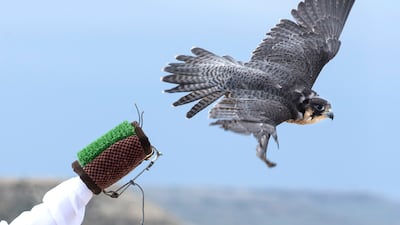The world — or at least the slice of it featured in the evening news — can seem a depressing place, with an endless stream of stories about war, corruption, inequality, crime and environmental destruction.
But before we get too downhearted by the doom and gloom filling news bulletins and newspapers, it’s worth remembering that things often make headlines because they are bad.
Indeed, speaking to the BBC this month, Steven Pinker, the Canadian-American psychologist and author, described journalism as “a non-random sample of the worst things that happen in the world at any given moment”.
Pinker has become something of champion of positive news, not least as he wrote a book, The Better Angels of Our Nature, in which he argued that violence had declined over time. The 2011 volume attracted much attention and praise, although some scholars took issue with its conclusions.
Pinker said there was “a natural incredulity” when he talked about data showing improvements in various areas, “because they don’t make the news”.
Reasons to be hopeful
People have told him that when they learnt that indicators of poverty or longevity were improving, they felt more hopeful about the world.
In Pinker’s view, positive news gets ignored in part because “good things tend to creep up” and sometimes they’re “the things that don’t happen”, such as the fall in the number of terrorist attacks in the US.
While it is easy to knock journalists for not accentuating the positive, bad stories can serve a useful role, such as when they hold the powerful to account, said Prof An Nguyen, professor of journalism at Bournemouth University in the UK.
Much news is about the unexpected, and such events — fires, accidents, sudden deaths — are more often than not bad things.
“Journalism is always looking for the exception rather than the norm,” he said. “Journalism is looking at something that, in statistical terms, we would call outliers. Something beyond the normal things that happen in daily life.”
On alert for bad news
Also, negative reporting may tap into what is sometimes described as the “negativity bias” in human psychology: we are more alert to the bad than to the good.
“The human brain evolved in a way to respond to dangers, to threats from the very primitive days until now,” Prof Nguyen said.
“The threats are different from the cave people thousands of years ago, but human beings have evolved in a way to respond much more strongly to bad things. That’s why bad news travels fast and good news travels very slowly.”
But too much negative reporting can cause people to switch off and avoid the news, he said, and even affect the mental health of audiences.
Prof Nguyen researches “solutions journalism”, a growing field in which reporting does not merely discuss things that are wrong, but also talks about how they could be improved.
While the evidence is mixed, some studies indicate that this type of reporting engages audiences and spurs them into feeling that they can make a difference to their local community or the wider world.
“This sort of story does serve the interests at least of some segments of the audience,” Prof Nguyen said.
War reporting, for example, can shift into peace reporting, looking into what is being done to overcome the difficulties that an area has experienced.
Indeed human ingenuity and energy has helped us to overcome many of the biggest challenges that our species — and in some cases other species — have faced.
Here we look at some of the ways in which the world has become a better place.
1. Fewer people live in absolute poverty
While countless tens of millions of people across the globe have very difficult lives, the numbers who live in extreme poverty, defined as having to live on less than $1.90 a day, has declined considerably.
One aim of the United Nations Millennium Development Goals was, between 1990 and 2015, to reduce by half the number of people living in absolute poverty.
This 50 per cent reduction was achieved five years before schedule, the UN reports, and more than 1 billion people were lifted out of extreme poverty in the quarter of a century after 1990.
Over the same time period, the number of people who were undernourished almost halved, a particularly impressive achievement given that the world's population is continuing to grow.
And numbers living in poverty continue to fall, with estimates suggesting that on an average day the number of people in extreme poverty declines by 137,000.
2. Child and maternal mortality have fallen, while life expectancy has increased
A major study looking at death rates in recorded human history, reported by OurWorldinData, found that the infant mortality rate (the proportion of children dying in their first year) was 26.9 per cent. Almost half of children, 46.2 per cent, never reached adulthood.
Today, the figures are very different. Averaged across the world, 2.9 per cent of children die in their first year, while 4.6 per cent die before their 15th birthday.
As OurWorldinData reports, “we have seen a very steep decline during our lifetimes” in childhood mortality, with rates only one fifth what they were in the middle of the 20th century.
For many families, the tragedy of death during infancy or childhood is all too real — 5.2 million children aged below 5 die each year — but it is much less common than it used to be.
Maternal mortality has also fallen dramatically, even over the past two decades, with 450,800 maternal deaths in 2000 and 293,760 in 2017.
Life expectancy has increased dramatically, rising from 29 years in 1800 when averaged across the world to 46 in 1950 and 71 in 2015.
3. Some animals that faced extinction are now thriving
Amid much negative news about how humans are heating the planet and destroying the natural world, there are positive stories of creatures threatened with extinction that have been brought back from the brink.
Among them is the Arabian oryx, which by the 1970s became extinct in the wild. Now, more than 1,200 of these animals live free, while thousands more are in captivity, often in large enclosures that enable them to roam widely.
There are other pieces of good news, including the recovery of the peregrine falcon, a bird described by The Nature Conservancy, a US-founded environmental organisation, as “nature's finest flying machine”.
This bird, which can dive at speeds above 320kph, suffered hugely because of habitat loss, egg collectors and, in particular, the pesticide DDT, which was subsequently banned in the US and elsewhere.
The bird was bred in captivity and thousands have been released in North America alone since the mid-1970s, while numbers have also recovered in other countries, including the UK.
4. Access to education for females has increased
Since the beginning of the 20th century, access to education for females has moved closer to that of males in every region of the world and, in some regions, females on average now spend more years than males in education.
In sub-Saharan Africa in 1900, females spent only 7.47 per cent as many years in education as males did. In the most dramatic turnaround of all regions, by 2010 the figure had grown to 82 per cent.
The Middle East and North Africa region has seen the ratio grow from 29.65 per cent in 1900 to 87.5 per cent in 2010, while in Asia and the Pacific it increased from 14.3 per cent to 84.07 per cent.
Latin America and the Caribbean recorded growth from 53.16 per cent to 101.28 per cent, Eastern Europe from 68.65 per cent to, also, 101.28 per cent, while in advanced economies, the increase was from 74.46 per cent to 100 per cent.
In all world regions, overall educational inequality has also fallen when figures from 1960 onwards are considered, indicating that more people have access to schooling.
5. Terrorist attacks are down
While some statistics, such as those of childhood mortality or life expectancy, show long-term, sustained declines, the reduction in the number of terrorist attacks across the globe is relatively recent, but does represent a clear trend.
Turn the clock back to 1992 and, across the globe, there was a total of 5,071 terrorist incidents by non-state actors, with the most heavily affected regions being the Middle East and North Africa, South America and Western Europe.
Numbers fell to 934 incidents in 1998 and, over the next five years or so, increased slightly before declining. After 1,167 incidents were recorded in 2003, numbers rose almost every year — often very steeply — for the next decade, peaking at 16,959 incidents in 2014.
There has been a steep decline since then, with numbers almost halving to 8,495 in 2019. While still much above historical averages, recent figures represent a significant improvement.
Specs
Engine: 51.5kW electric motor
Range: 400km
Power: 134bhp
Torque: 175Nm
Price: From Dh98,800
Available: Now
RESULT
Copa del Rey, semi-final second leg
Real Madrid 0
Barcelona 3 (Suarez (50', 73' pen), Varane (69' OG)
Key findings of Jenkins report
- Founder of the Muslim Brotherhood, Hassan al Banna, "accepted the political utility of violence"
- Views of key Muslim Brotherhood ideologue, Sayyid Qutb, have “consistently been understood” as permitting “the use of extreme violence in the pursuit of the perfect Islamic society” and “never been institutionally disowned” by the movement.
- Muslim Brotherhood at all levels has repeatedly defended Hamas attacks against Israel, including the use of suicide bombers and the killing of civilians.
- Laying out the report in the House of Commons, David Cameron told MPs: "The main findings of the review support the conclusion that membership of, association with, or influence by the Muslim Brotherhood should be considered as a possible indicator of extremism."
COMPANY%20PROFILE
%3Cp%3E%3Cstrong%3ECompany%20name%3A%3C%2Fstrong%3E%20Clinicy%3Cbr%3E%3Cstrong%3EStarted%3A%3C%2Fstrong%3E%202017%3Cbr%3E%3Cstrong%3EFounders%3A%3C%2Fstrong%3E%20Prince%20Mohammed%20Bin%20Abdulrahman%2C%20Abdullah%20bin%20Sulaiman%20Alobaid%20and%20Saud%20bin%20Sulaiman%20Alobaid%3Cbr%3E%3Cstrong%3EBased%3A%3C%2Fstrong%3E%20Riyadh%3Cbr%3E%3Cstrong%3ENumber%20of%20staff%3A%3C%2Fstrong%3E%2025%3Cbr%3E%3Cstrong%3ESector%3A%3C%2Fstrong%3E%20HealthTech%3Cbr%3E%3Cstrong%3ETotal%20funding%20raised%3A%3C%2Fstrong%3E%20More%20than%20%2410%20million%3Cbr%3E%3Cstrong%3EInvestors%3A%3C%2Fstrong%3E%20Middle%20East%20Venture%20Partners%2C%20Gate%20Capital%2C%20Kafou%20Group%20and%20Fadeed%20Investment%3C%2Fp%3E%0A
SPEC%20SHEET%3A%20APPLE%20M3%20MACBOOK%20AIR%20(13%22)
%3Cp%3E%3Cstrong%3EProcessor%3A%3C%2Fstrong%3E%20Apple%20M3%2C%208-core%20CPU%2C%20up%20to%2010-core%20CPU%2C%2016-core%20Neural%20Engine%3C%2Fp%3E%0A%3Cp%3E%3Cstrong%3EDisplay%3A%3C%2Fstrong%3E%2013.6-inch%20Liquid%20Retina%2C%202560%20x%201664%2C%20224ppi%2C%20500%20nits%2C%20True%20Tone%2C%20wide%20colour%3C%2Fp%3E%0A%3Cp%3E%3Cstrong%3EMemory%3A%3C%2Fstrong%3E%208%2F16%2F24GB%3C%2Fp%3E%0A%3Cp%3E%3Cstrong%3EStorage%3A%3C%2Fstrong%3E%20256%2F512GB%20%2F%201%2F2TB%3C%2Fp%3E%0A%3Cp%3E%3Cstrong%3EI%2FO%3A%3C%2Fstrong%3E%20Thunderbolt%203%2FUSB-4%20(2)%2C%203.5mm%20audio%2C%20Touch%20ID%3C%2Fp%3E%0A%3Cp%3E%3Cstrong%3EConnectivity%3A%3C%2Fstrong%3E%20Wi-Fi%206E%2C%20Bluetooth%205.3%3C%2Fp%3E%0A%3Cp%3E%3Cstrong%3EBattery%3A%3C%2Fstrong%3E%2052.6Wh%20lithium-polymer%2C%20up%20to%2018%20hours%2C%20MagSafe%20charging%3C%2Fp%3E%0A%3Cp%3E%3Cstrong%3ECamera%3A%3C%2Fstrong%3E%201080p%20FaceTime%20HD%3C%2Fp%3E%0A%3Cp%3E%3Cstrong%3EVideo%3A%3C%2Fstrong%3E%20Support%20for%20Apple%20ProRes%2C%20HDR%20with%20Dolby%20Vision%2C%20HDR10%3C%2Fp%3E%0A%3Cp%3E%3Cstrong%3EAudio%3A%3C%2Fstrong%3E%204-speaker%20system%2C%20wide%20stereo%2C%20support%20for%20Dolby%20Atmos%2C%20Spatial%20Audio%20and%20dynamic%20head%20tracking%20(with%20AirPods)%3C%2Fp%3E%0A%3Cp%3E%3Cstrong%3EColours%3A%3C%2Fstrong%3E%20Midnight%2C%20silver%2C%20space%20grey%2C%20starlight%3C%2Fp%3E%0A%3Cp%3E%3Cstrong%3EIn%20the%20box%3A%3C%2Fstrong%3E%20MacBook%20Air%2C%2030W%2F35W%20dual-port%2F70w%20power%20adapter%2C%20USB-C-to-MagSafe%20cable%2C%202%20Apple%20stickers%3C%2Fp%3E%0A%3Cp%3E%3Cstrong%3EPrice%3A%3C%2Fstrong%3E%20From%20Dh4%2C599%3C%2Fp%3E%0A
'HIJRAH%3A%20IN%20THE%20FOOTSTEPS%20OF%20THE%20PROPHET'
%3Cp%3E%3Cstrong%3EEdited%20by%3A%3C%2Fstrong%3E%20Idries%20Trevathan%3Cbr%3E%3Cstrong%3EPages%3A%3C%2Fstrong%3E%20240%3Cbr%3E%3Cstrong%3EPublisher%3A%3C%2Fstrong%3E%20Hirmer%20Publishers%3Cbr%3E%3Cstrong%3EAvailable%3A%3C%2Fstrong%3E%20Now%3C%2Fp%3E%0A
Lexus LX700h specs
Engine: 3.4-litre twin-turbo V6 plus supplementary electric motor
Power: 464hp at 5,200rpm
Torque: 790Nm from 2,000-3,600rpm
Transmission: 10-speed auto
Fuel consumption: 11.7L/100km
On sale: Now
Price: From Dh590,000
The specs
AT4 Ultimate, as tested
Engine: 6.2-litre V8
Power: 420hp
Torque: 623Nm
Transmission: 10-speed automatic
Price: From Dh330,800 (Elevation: Dh236,400; AT4: Dh286,800; Denali: Dh345,800)
On sale: Now
Jurassic%20Park
%3Cp%3E%3Cstrong%3EDirector%3A%20%3C%2Fstrong%3ESteven%20Spielberg%3Cbr%3E%3Cstrong%3EStars%3A%3C%2Fstrong%3E%20Sam%20Neill%2C%20Jeff%20Goldblum%20and%20Richard%20Attenborough%3Cbr%3E%3Cstrong%3ERating%3A%3C%2Fstrong%3E%205%2F5%3C%2Fp%3E%0A
WORLD CUP SQUAD
Dimuth Karunaratne (Captain), Angelo Mathews, Avishka Fernando, Lahiru Thirimanne, Kusal Mendis (wk), Kusal Perera (wk), Dhananjaya de Silva, Thisara Perera, Isuru Udana, Jeffrey Vandersay, Jeevan Mendis, Milinda Siriwardana, Lasith Malinga, Suranga Lakmal, Nuwan Pradeep
HIJRA
Starring: Lamar Faden, Khairiah Nathmy, Nawaf Al-Dhufairy
Director: Shahad Ameen
Rating: 3/5
The Facility’s Versatility
Between the start of the 2020 IPL on September 20, and the end of the Pakistan Super League this coming Thursday, the Zayed Cricket Stadium has had an unprecedented amount of traffic.
Never before has a ground in this country – or perhaps anywhere in the world – had such a volume of major-match cricket.
And yet scoring has remained high, and Abu Dhabi has seen some classic encounters in every format of the game.
October 18, IPL, Kolkata Knight Riders tied with Sunrisers Hyderabad
The two playoff-chasing sides put on 163 apiece, before Kolkata went on to win the Super Over
January 8, ODI, UAE beat Ireland by six wickets
A century by CP Rizwan underpinned one of UAE’s greatest ever wins, as they chased 270 to win with an over to spare
February 6, T10, Northern Warriors beat Delhi Bulls by eight wickets
The final of the T10 was chiefly memorable for a ferocious over of fast bowling from Fidel Edwards to Nicholas Pooran
March 14, Test, Afghanistan beat Zimbabwe by six wickets
Eleven wickets for Rashid Khan, 1,305 runs scored in five days, and a last session finish
June 17, PSL, Islamabad United beat Peshawar Zalmi by 15 runs
Usman Khawaja scored a hundred as Islamabad posted the highest score ever by a Pakistan team in T20 cricket
The specs
Engine: 3.8-litre V6
Power: 295hp at 6,000rpm
Torque: 355Nm at 5,200rpm
Transmission: 8-speed auto
Fuel consumption: 10.7L/100km
Price: Dh179,999-plus
On sale: now
Villains
Queens of the Stone Age
Matador
UAE currency: the story behind the money in your pockets
The burning issue
The internal combustion engine is facing a watershed moment – major manufacturer Volvo is to stop producing petroleum-powered vehicles by 2021 and countries in Europe, including the UK, have vowed to ban their sale before 2040. The National takes a look at the story of one of the most successful technologies of the last 100 years and how it has impacted life in the UAE.
Read part four: an affection for classic cars lives on
Read part three: the age of the electric vehicle begins
Read part one: how cars came to the UAE
Important questions to consider
1. Where on the plane does my pet travel?
There are different types of travel available for pets:
- Manifest cargo
- Excess luggage in the hold
- Excess luggage in the cabin
Each option is safe. The feasibility of each option is based on the size and breed of your pet, the airline they are traveling on and country they are travelling to.
2. What is the difference between my pet traveling as manifest cargo or as excess luggage?
If traveling as manifest cargo, your pet is traveling in the front hold of the plane and can travel with or without you being on the same plane. The cost of your pets travel is based on volumetric weight, in other words, the size of their travel crate.
If traveling as excess luggage, your pet will be in the rear hold of the plane and must be traveling under the ticket of a human passenger. The cost of your pets travel is based on the actual (combined) weight of your pet in their crate.
3. What happens when my pet arrives in the country they are traveling to?
As soon as the flight arrives, your pet will be taken from the plane straight to the airport terminal.
If your pet is traveling as excess luggage, they will taken to the oversized luggage area in the arrival hall. Once you clear passport control, you will be able to collect them at the same time as your normal luggage. As you exit the airport via the ‘something to declare’ customs channel you will be asked to present your pets travel paperwork to the customs official and / or the vet on duty.
If your pet is traveling as manifest cargo, they will be taken to the Animal Reception Centre. There, their documentation will be reviewed by the staff of the ARC to ensure all is in order. At the same time, relevant customs formalities will be completed by staff based at the arriving airport.
4. How long does the travel paperwork and other travel preparations take?
This depends entirely on the location that your pet is traveling to. Your pet relocation compnay will provide you with an accurate timeline of how long the relevant preparations will take and at what point in the process the various steps must be taken.
In some cases they can get your pet ‘travel ready’ in a few days. In others it can be up to six months or more.
5. What vaccinations does my pet need to travel?
Regardless of where your pet is traveling, they will need certain vaccinations. The exact vaccinations they need are entirely dependent on the location they are traveling to. The one vaccination that is mandatory for every country your pet may travel to is a rabies vaccination.
Other vaccinations may also be necessary. These will be advised to you as relevant. In every situation, it is essential to keep your vaccinations current and to not miss a due date, even by one day. To do so could severely hinder your pets travel plans.
Source: Pawsome Pets UAE













